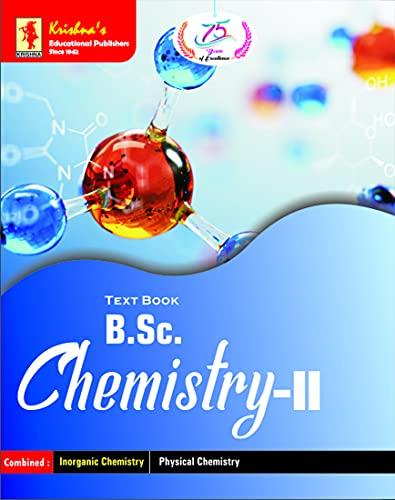
English | 2021 | ASIN: B097S95ZB2 | 484 pages | PDF | 7.33 MB
SYLLABUS- B.Sc. CHEMISTRY-II, INORGANIC CHEMISTRY-II
1.Chemical Bonding
Molecular Orbital Theory (MOT) as applied to diatomic homonuclear/heteronuclear inorganic molecules. MO
diagrams and bond order of H2, He2, Li2, Be2, B2, C2, N2, O2, F2, Ne2, CO and NO, difference between VB and
MO theories. Multicentre bonding in electron deficient molecules. Polarization of covalent molecules;
percentage ionic character from dipole and electronegativity difference. Weak interactions-hydrogen bonding
and Van der Waals forces.
2.Ionic Solids
Ionic structures, radius-ratio effects and coordination number. Lattice defects, semiconductors, lattice energy
and Borne-Haber cycle. Solvation energy and solubility of ionic solids. Polarizing power and polarizability;
Fajan's rule. Metallic bond- Electron Pool and MO theories.
3.s-Block Elements
General discussion with respect to all periodic and chemical properties, diagonal relationship, salient features of
hydrides, solvation and complexation tendencies, an introduction to their alkyls and aryls. Role of alkali and
alkaline earth metal ions in bio-systems.
4.p-Block Elements
General discussion and comparative study (all periodic and chemical properties) including diagonal
relationship, of groups 13 to 17 elements; chemistry of elements hydrides, oxides & oxy-acids, and halides
(including inter-halogen compounds). Diborane-properties & structure, borohydrides, carbides, fluorocarbons,
basic properties of iodine and polyhalides.
Inert-pair effect: in heavier elements of 13, 14 & 15 group elements; its consequences in redox properties of
their halides.
ORGANIC CHEMISTRY-II
1.Alkenes, Cycloalkenes, Dienes and Alkynes
Nomenclature of alkenes, methods of formation, mechanism of dehydration of alcohols and
dehydrohalogenation of alkyl halides, regioselectivity in alcohol dehydration. The Saytzeff Rule, Hoffmann
Elimination, physical properties and relative stabilities of alkenes. Chemical reactions of alkenes-mechanisms
involved in hydrogenation, electrophilic and free radical additions, Markownikoff's Rule, hydroboration-
oxidation, oxymercuration-reduction. Epoxidation, ozonolysis, hydration, hydroxylation and oxidation with
KMnO4, Polymerization of alkenes. Substitution at the allylic and vinylic positions of alkenes. Industrial applications of ethylene and propene.
2.Arenes and Aromaticity
Nomenclature of benzene derivatives. The aryl group. Aromatic nucleus and side chain. Structure of benzene:
molecular formula and Kekule structure. Stability and carbon "carbon bond length of benzene, resonance
structure, MO picture. Aromaticity "the HÑŒckel rule, aromatic ions.
Aromatic electrophilic substitution "general pattern of the mechanism , role of s and p complexes. Mechanism of
nitration , halogenation, sulphonation, mercuration and Friedel- Crafts reaction. Energy profile diagrams.
Activating and deactivating substituents, orientation and ortho/para ratio. Side chain reactions of benzene
derivatives. Birch reduction. Methods of formation and chemical reactions of alkylbenzenes, alkynylbenzenes and biphenyl.
PHYSICAL CHEMISTRY-II
1. Chemical Kinetics and Catalysis
Chemical kinetics and its scope, rate of a reaction, factors influencing the rate of a reaction"concentration,
temperature, pressure, solvent, light, catalyst. Concentration dependence of rates mathematical characteristics
of simple reaction " zero order, first order, second order, pseudo order, half life determination of the order of
reaction " differential method, method of integration, method of half life period and isolation methods, concept
of activation energy. Radioactive decay a first order phenomenon.
download скачать
https://nitroflare.com/view/838F14A934C8D4B/or7ku.Krishnas..B.Sc..Chemistry.II.Edition2B.pdf
https://rapidgator.net/file/428ab310022b38c14cc0800021e28c51/or7ku.Krishnas..B.Sc..Chemistry.II.Edition2B.pdf

